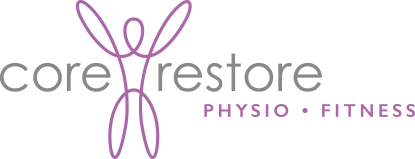Wellbeing & Wellness
If you want to adapt a healthier lifestyle, the key is to make it really simple and at the same time, enjoyable for you. Committing to doing what you say you’re going to do, whilst being mindful that the things you commit to stay within your attainable boundaries. To really live well, it’s about being consistent, and being realistic; and let’s face it, it has to be fun, otherwise you just wont do it!
Now, as I’m a Physiotherapist, obviously I have a bias towards movement. The benefits of exercise in maintaining bone mass, improving strength, flexibility, and balance is well documented. Weight bearing and resistance or strength exercise helps increase bone density by stimulating literal bone growth, leading to stronger bones. Resistance/strength training is particularly important in developing bone density, thereby reducing fracture risk, plus balance focused exercises have been shown to reduce the risk of a fall by 25%. Add to that postural enhancements, which can improve lung capacity/breathing, and reduce aches and pains, and we’re onto a winner
Pilates can offer all of the above benefits, leading to improved quality of life, and is supported by science based research. Research has also found people who participate regularly have improvements in physical performance and quality of life. If you think Pilates means lying on the floor, think again; classes can be modified to chair based exercises, standing work, and with or without equipment. In addition, Physio-led classes are able to offer adaptations where pathology or medical issues would usually inhibit participation.
Classes are often appropriate for people of all ages and ability, from absolute novice to elite athlete. Regular Pilates can change your body shape, help improve posture, muscle tone, balance, and joint mobility, as well as relieve stress and tension. It can even improve your continence and sex life. Now that’s what I call wellbeing
(References: Mallin & Murphy, 2013; Stolz et al, 2012; Wells et al, 2013)
Physio-led Pilates: What Makes it Special?
Low-impact flexibility, strength and endurance movements are honed through repetition and steady progression of specific exercises. Classes concentrate on ‘core muscles’, emphasising abdominals and postural muscles in the shoulders, as well as upper an lower body. Matwork Pilates is a combination of the original 34 pilates exercises developed by Jo Pilates in his early years. They consist of strength, mobility and stretching exercises performed on a mat, maintaining a central core of stability in the lumbo-pelvic region.
Jo believed that injuries were caused by imbalances in the body and habitual patterns of movement. Weakness in a certain area leading to compensations or overdevelopment in another area. Jo found it critical to re-educate the body to prevent recurrence. A belief that 60 years later has been developed as muscle imbalance theories of Physiotherapy today.
Men & Pilates
I’ve lost count of the number of times I’ve heard Pilates is ‘a bit girly isn’t it?’ Let’s just remember that Pilates was developed by a man, and all the positive outcomes apply to all sexes. Men are generally posturally ‘stiffer’ with shorter hamstrings which predisposes to lower back issues. Many men who attend classes find they’re quite surprised to see how quickly they change and the positive effects that impact on day to day life, as well as physical activity. So ladies, if you’re the one reading this, rope your man into Pilates as well and you may hear less complaints about ailments! To the men who already attend a class; you guys are in the know ;).
